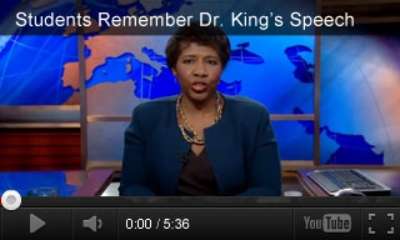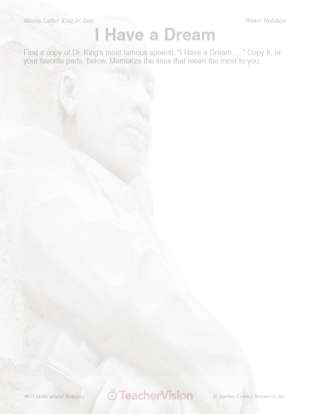The Civil Rights Movement in the 1950s and 1960s
Challenging racial prejudice in the United States in the 1950s was a daunting undertaking. While African-Americans, in the main, again bore the brunt of the backlash, no single person, group, or institution put civil rights on the national agenda, and no one person, group, or institution saw to it that it stayed on the national agenda. Stay it did.
The changes in attitude and law that did occur came about as the result of a shared commitment from many, many people to take risks, highlight injustice, and press the cause for change. That commitment was not an easy one to make.
It is easy to forget, in today's era of more cautious and covert discrimination, that the choice to add one's voice to the chorus for change was a choice that could—and not infrequently did—result in death. But those were the stakes between the years 1954 and 1968 in the United States of America.
Tens of thousands of people of all races risked not just their standing in the community, but also their lives, in the hope of building a coalition for racial equality that could not possibly be ignored. They succeeded in building that coalition—even if the highest ideals of the cause they promoted remain, in some cases, unfulfilled. (That may simply be the nature of high ideals.)
Activism for Equal Opportunity
The Movement (as it came to be known) was peopled not only by courageous African-Americans, but also by college students and religious leaders of many races.
These activists employed the tactics of legal challenges, civil protests (including sit-ins, marches, and freedom rides), and other initiatives in their efforts to see that African-Americans received equal opportunity and protection in the United States.
The Nonviolent Ideal
Not all who agitated for racial equality between 1954 and 1968 did so in the hope of promoting nonviolent social change. A significant portion of the civil rights movement was, however, devoted to the idea of peaceful challenges, rather than bloody resistance or attack, to change racist institutions.
A key factor in the success of the civil rights movement was the choice that radicalized African-American organizations offered to cautiously slow-moving governmental policy-makers: the rhetoric of “Black Power” or the pacifism of Martin Luther King Jr.; the street rage of Malcolm X or the theology of Reverend King. Policy makers chose the leader representing peaceful change.
The primary advocate for this approach was Dr. Martin Luther King Jr. Two of King's major historical influences were Henry David Thoreau and Mahatma Gandhi. Thoreau had argued, in Civil Disobedience, that if enough people openly disobeyed unjust laws, those laws would fall. Gandhi had followed much the same approach in launching his “peaceful revolution” against British rule in India.
There were many components of the struggle for civil rights; the following events are some of the highlights.














